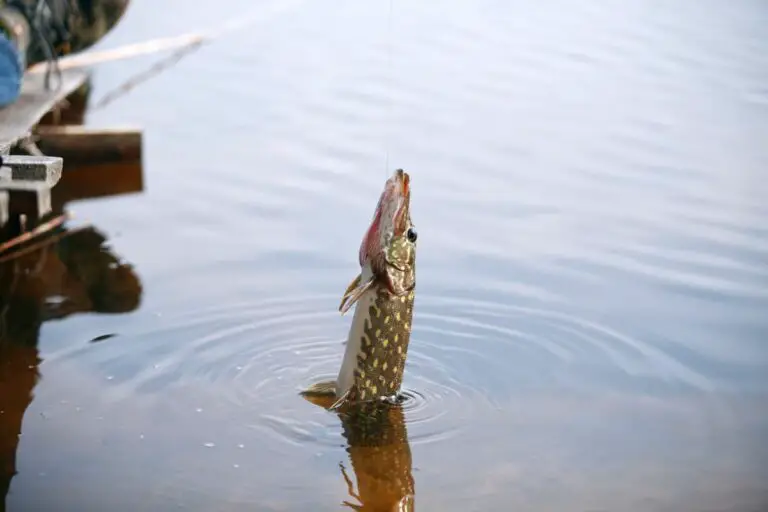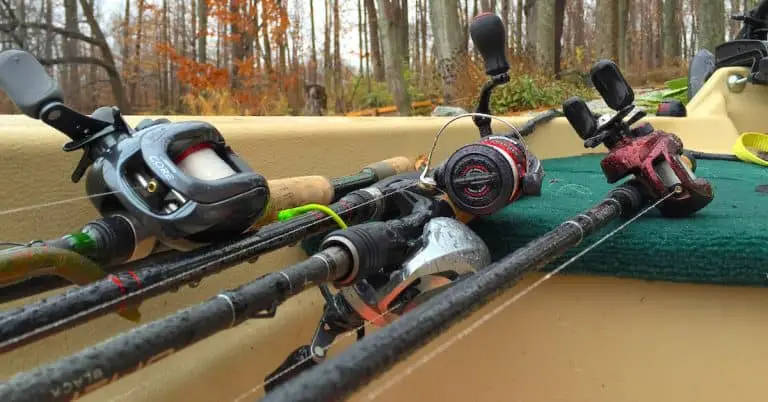Do You Need to Be Able to Swim to Paddle Board? A Must-Follow Guide
Paddleboarding has become one of the fastest-growing water sports in recent years, attracting enthusiasts of all ages and abilities.
However, for those who don’t swim, there are some concerns about whether paddle boarding is safe. So, do you need to be able to swim to paddle board?
You do not need to be able to swim to paddle board. However, there are still some risks to paddle boarding, so non-swimmers need to take proper precautions, such as wearing a lifejacket and paddling in water depth appropriate to their skill level, to ensure their safety.
Keep reading to learn more about the risks of paddle boarding and how to paddle board safely if you don’t know how to swim.
Table of Contents
Do You Need to Be Able to Swim to Paddle Board?

Paddle boarding is a popular water sport that involves standing or kneeling on a longboard and propelling yourself forward using a paddle.
While being able to swim is an advantage in any water-based activity, it is not a strict requirement for paddleboarding. That being said, there are certain skills and techniques required to become a competent paddleboarder.
These skills include:
- Balance: Paddle boarding requires a good sense of balance to stand or kneel on the board while paddling. Practicing balance exercises such as standing on one foot or using a balance board can help improve your balance.
- Paddle Technique: Learning the proper paddling technique is essential for effective propulsion and maneuverability. This involves using a correct grip on the paddle, maintaining a vertical paddle shaft, and using a smooth, rhythmic motion to paddle.
- Board Control: Understanding how to control the board is critical for maintaining stability and avoiding falls. This includes learning how to turn the board, how to adjust your weight distribution, and how to navigate choppy or windy conditions.
Is Paddle Boarding Safe for Non-Swimmers?
While non-swimmers can participate in paddle boarding, there are certain risks that should be considered.
The main risk associated with paddle boarding for non-swimmers is the potential for falling off the board and being unable to swim back to safety, which can further increase the risk of injury or drowning.
While paddle boarding typically takes place in calm and shallow waters, such as lakes, ponds, and bays, unexpected weather conditions, waves, or currents can create hazardous situations for those who are not confident swimmers.
Another risk associated with paddle boarding for non-swimmers is the potential for injury from collisions with other watercraft or objects in the water. Without the ability to swim, a non-swimmer may be unable to quickly move out of the way of potential hazards or navigate around other watercraft.
Ultimately, paddle boarding can be a fun and safe activity for non-swimmers as long as they understand the risks involved and take the necessary precautions to reduce these risks.
How to Paddle Board Safely If You Don’t Know How to Swim?

If you want to try paddleboarding but don’t know how to swim, there are several precautions you can take to ensure your safety.
But before we take these precautions, you must choose the right paddle board and determine the right water depth for your skill level.
Choosing A Paddle Board
Choosing a paddleboard can be a daunting task, especially if you are a beginner, and there are many factors you need to consider to make sure that the paddle board is safe and appropriate for your needs.
So, let’s take a quick look at some of these factors:
- Size: Generally, longer and wider boards are more stable and provide more surface area for the rider to balance on, making them a good choice for beginners.
- Weight capacity: Make sure to choose a paddle board with a weight capacity that exceeds your body weight, plus any additional weight from gear or accessories, to ensure that the board is stable and buoyant
- safety features: Some paddleboards come with safety features such as deck padding, which can provide extra grip and prevent slipping.
- Other safety features to consider include grab handles, leash attachments, and safety fins, which can help keep the board stable and prevent it from tipping over.
If you’re not sure which paddle board to go for, I recommend this Sportic Pro SUP Paddle Board; it is ideal for a beginner with its rugged design, triple fins, and non-slip deck to guarantee maximum stability. It also comes with an adjustable Paddle, a safety leash, and a carry bag.

Determining the Water Depth
Water depth can have a significant impact on paddle boarding, you need to consider your skills before you determine the depth at which you will be paddle boarding.
Shallow water (between 20” and 30”) is safer, but it presents other challenges, as the board will be more prone to hit bottom, making it harder to maintain balance, especially in choppy or wavy conditions.
Meanwhile, deeper water (between 40” and 70”) tends to be more stable, making it easier to maintain their balance and paddle efficiently, but it may be unsafe if you don’t know how to swim.
So, it’s recommended that non-swimmers stay in shallow water to stand up in case of a fall. This can vary depending on the rider’s height, but as a general rule, go for water that is waist-deep or less.
Other Paddle Boarding Safety Tips for Non-Swimmers
- Always wear a personal flotation device (PFD) that fits properly and is approved by the U.S. Coast Guard.
- When you’re first starting out, choose calm, shallow waters that are free of currents and waves. This will make it easier to maintain your balance and reduce the risk of falling off the board.
- Many beaches and waterways have designated areas for paddleboarding. These areas are often marked with buoys or signs and are specifically chosen for their safety. Stay within these designated areas to minimize your risk of encountering dangerous currents or boats.
- Avoid standing up on the board in deep water until you feel comfortable and confident in your abilities. If you fall off the board in deep water, grab onto it and try to get back on as quickly as possible.
- Consider taking lessons from a qualified instructor who can teach you the proper techniques for balance, paddling, and navigating. An instructor can also provide guidance on safety and emergency procedures.
- If possible, paddle with a partner who is a strong swimmer and can help you in the event of an emergency. Make sure that your partner is aware of your swimming abilities and any precautions you are taking.
- Before you head out, check the weather forecast to make sure that conditions are suitable for paddleboarding. Avoid paddling in high winds or during thunderstorms, which can create dangerous conditions.
- Even if you take all necessary precautions, accidents can still happen. Make sure that you know how to signal for help and have a plan in place for how to handle an emergency situation.
Remember, safety should always be your top priority when paddleboarding, especially if you’re a non-swimmer. By following these tips and using common sense, you can have a safe and enjoyable paddleboarding experience.
Kayak your way to Freedom
- On a budget? Check out the best fishing kayaks under $500 here and the best Fishing Kayaks under $1,000 here. Or Check the best Cheap Kayaks here.
- Going fishing? Here are the best Ocean fishing kayaks, and here are the best River Fishing Kayaks.
- You can also find the best Fly Fishing Kayaks here and the best Bass Fishing Boats here.
- A bit experienced? Check out the best modular kayaks here and the best tandem fishing kayaks here.
- Looking for something special? Check out my favorite Ducky kayaks here.
- Navigate your way with these awesome and beginner-friendly Kayak compasses.
- Going Hunting? These Duck hunting kayaks will give you an unfair advantage!
- Have a need for speed? These motorized kayaks will get you moving.
- Protect yourself from the sun with these Kayak shades, and make your kayak more comfortable with these Kayak seats.
- Keep your feet dry and warm with these superb Kayaking shoes.
- Going Kayaking in cold water? Stay warm with these Kayaking gloves.
- Paddle Less, Fish More with the Best Kayak Motors
- Looking to get a trolling motor on your kayak? Check out the best kayak trolling motor mounts here.
If you like this article, please share it or pin it, you can find the share buttons below. We will really appreciate it ❤️








